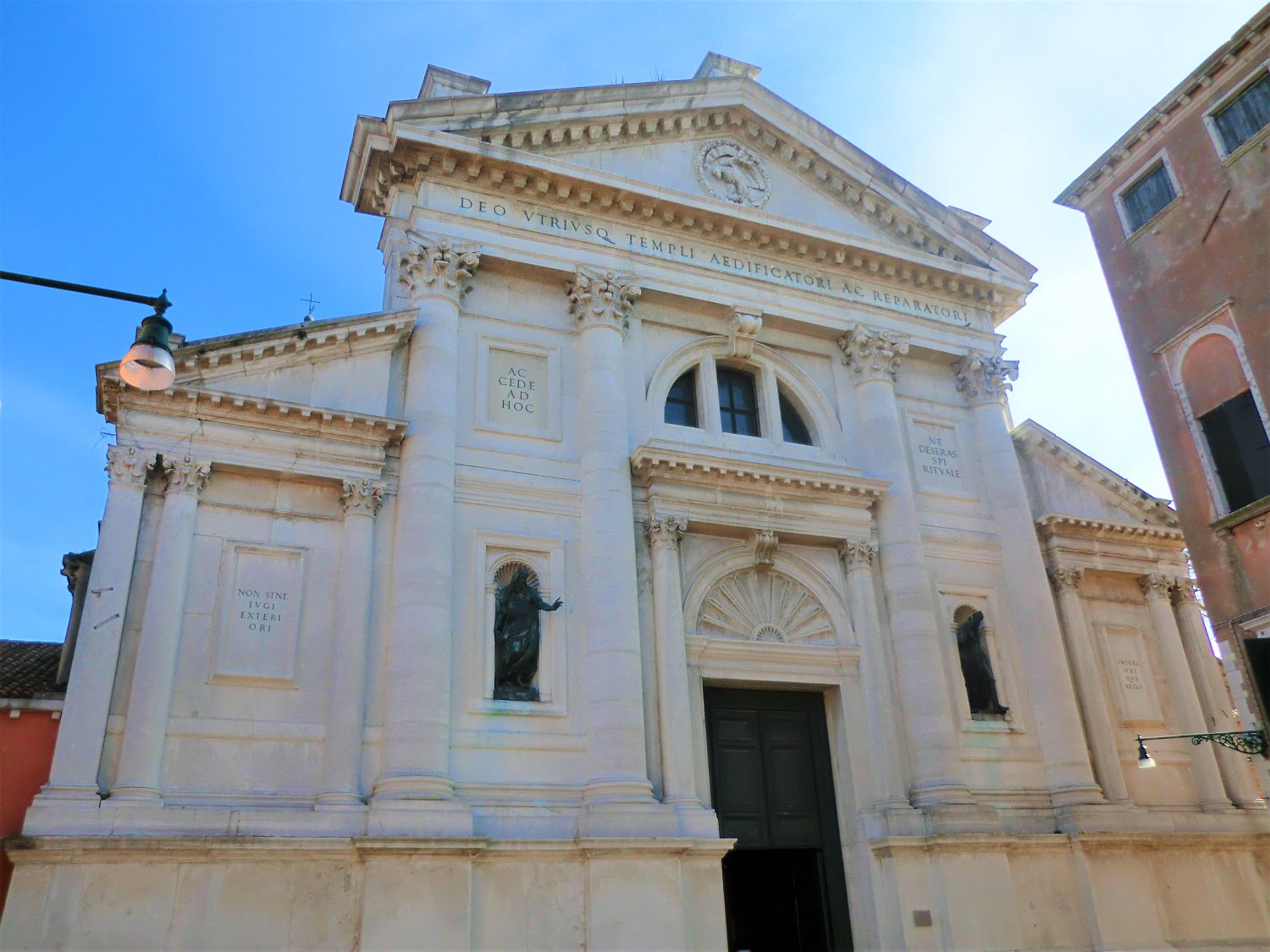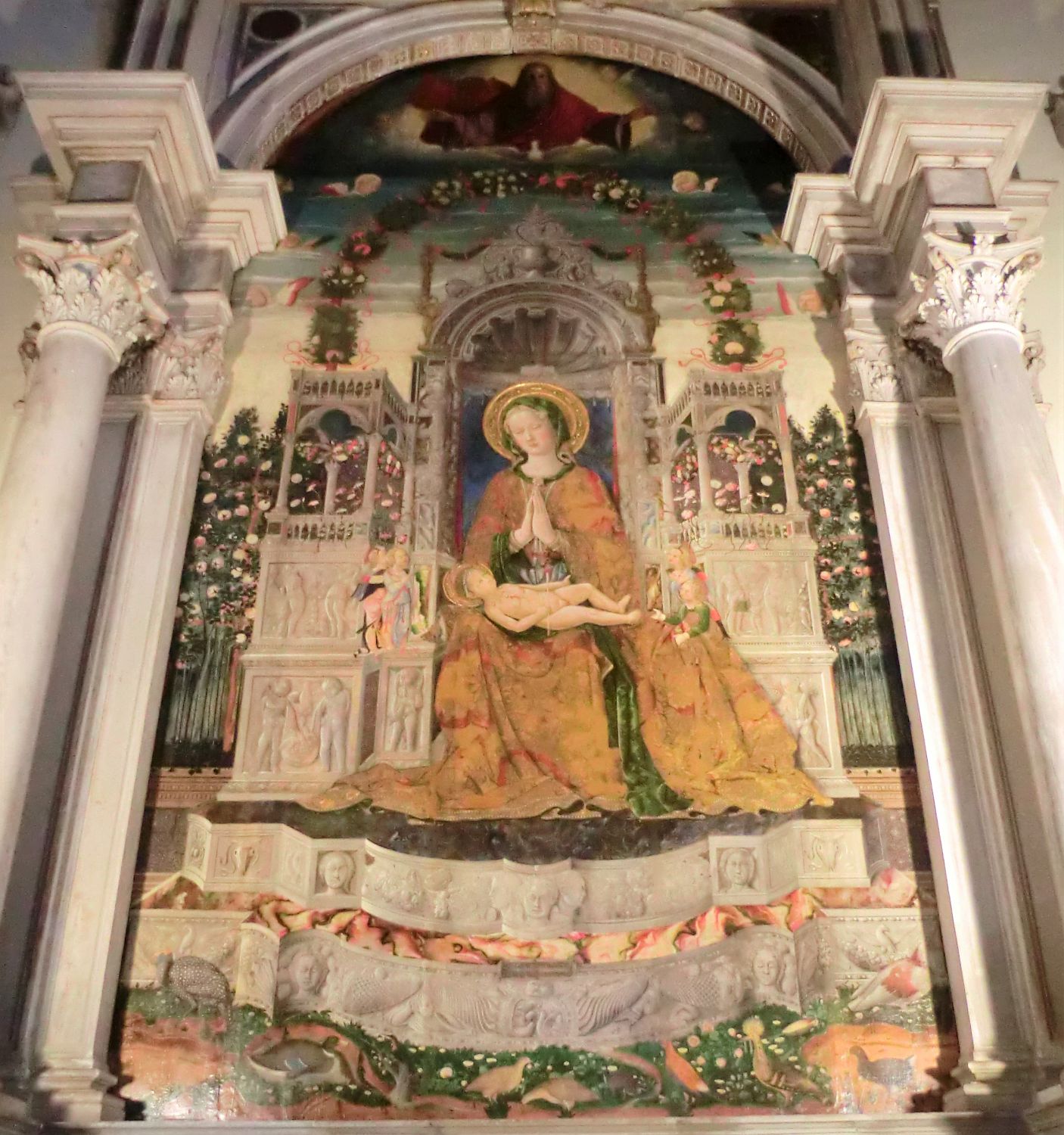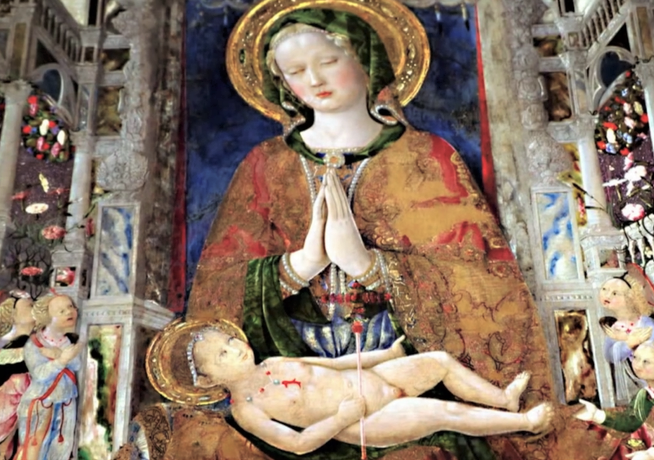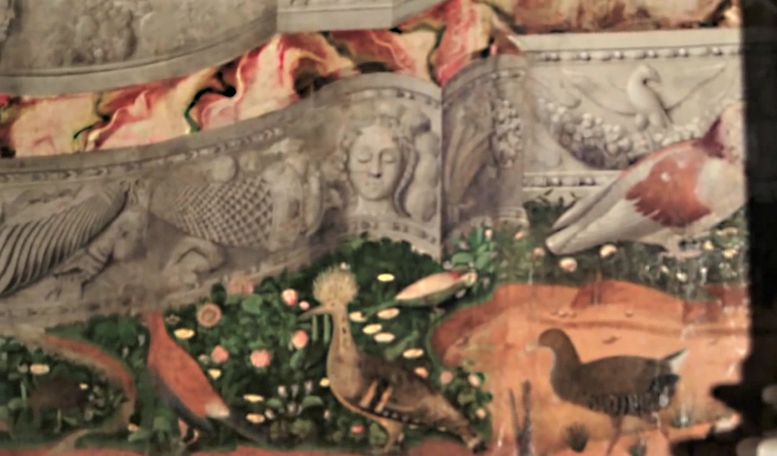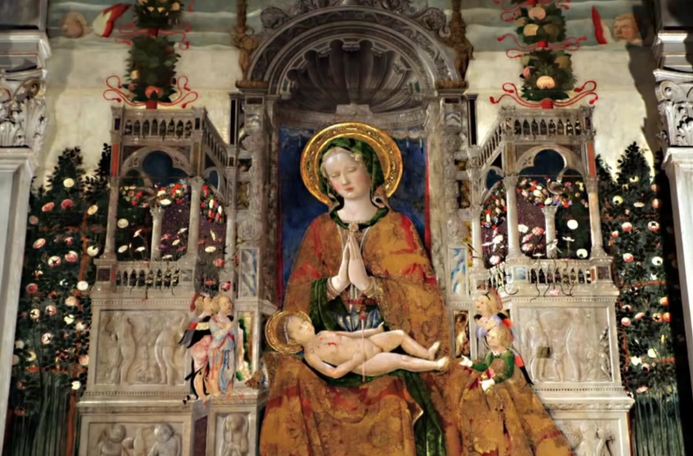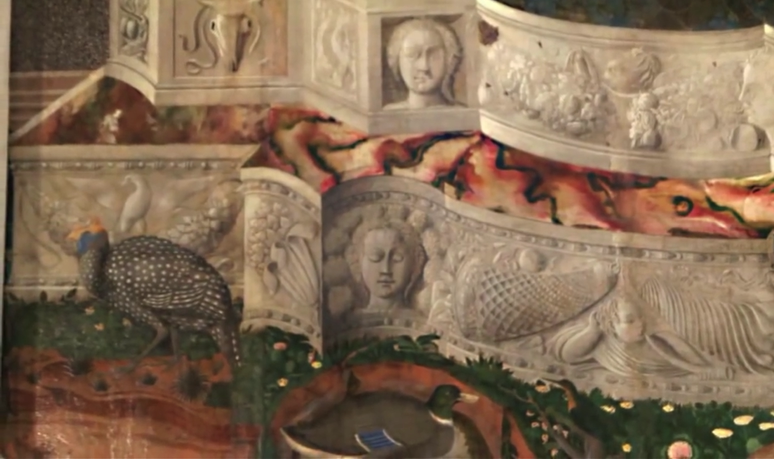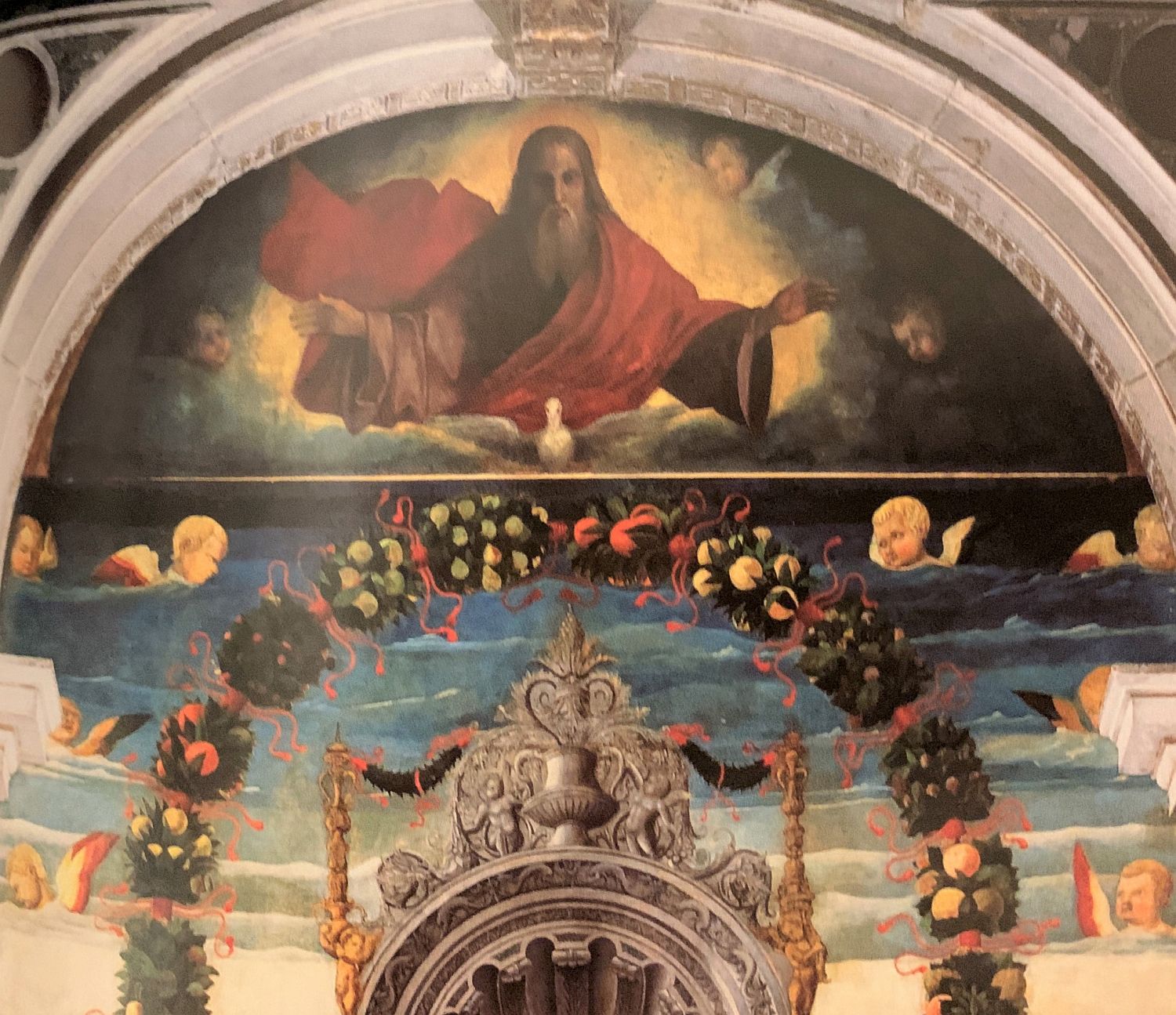Discovering a hidden treasure...
Let’s walk away from the most famous and crowded areas of our city and discover a real jewel of an unusual,
hidden Venice, which you can better appreciate on a guided tour.
We can enter a special church, San Francesco della Vigna (the church of St. Francis of the Vineyard), in the
district of Castello.
The Church of San Francesco della Vigna
Antonio da Negroponte Let us stop in front of an artistically exquisite work of art: “The Holy Mary and Baby Jesus enthroned”, by
Antonio da Negroponte.
The Holy Mary and Baby Jesus Enthroned, by Antonio da Negroponte
Unfortunately, there are too few documents about this painter, who signed his masterpiece as “Frater Antonius de Negropon. Pinxit” (i.e. Painted by Brother Antonius from Negroponte).
As we can understand,
he was a friar who for some time moved to Venice from an island called Negroponte (Negroponte is the way the Venetians used to call Euboea, an island in Central Greece) and left only this unique art work in our city.
Painted with
tempera colors on wood, the painting is 3 meters high and 2.35 meters wide (10 x 7,7 feet), and it probably dates back to
1450-1460.
A historical note: in those years Euboea belonged to the Venetian Republic, but in 1470 the island was conquered by the Turks and Venice lost it completely.
The masterpieceOne element that immediately hits the viewer is the
damask cloak of the Holy Mary, embellished with green details that recall, in perfect chromatic unity, the garden and the plants that surround the throne.
The hourtus conclusus (i.e. enclosed garden) stands for Mary’s virginity.Baby Jesus is placed horizontally on his Mother’s lap, the color of his flesh is similar to the color of Mary’s face and hands, as to form the base of a
triangle which ideally supports the world.
Detail with Baby Jesus and Mary
The precision and accuracy with which plants, fruits, flowers and animals are represented leaves the viewer almost breathless. Behind the throne and at the basis of the two large white marble steps the entire creation is displayed in front of our eyes.
A wide range of
different birds, a tortoise, a frog appear to create sort of a movement and some noise, thus interrupting the sacred silence of the scene. The
leaves, grass, fruits and flowers, represented in detail, seem to be almost palpable, as if one could touch them, could feel their delightful smell…
Detail with plants
The two little
Gothic aedicules are simply marvelous: from the top of these architectural elements, a garland of flowers creates an arch that frames the Holy Mary in adoration of Baby Jesus.
Detail with aedicules
From a stylistic point of view, this a late Gothic painting: in that period, the Gothic style was coming to an end, opening the way to the new Renaissance language.
The two large steps, in fact, are represented in correct perspective, although surrounded by Gothic elements: this is then a clear example of this
transitional period.
Detail, the two large steps
The perfect stylistic and chromatic harmony of the painting is interrupted by the figure of the Almighty, which was added later by Benedetto Diana, a master of the Venetian Renaissance.
Detail with God the Almighty
These few words that we have written, however, are not enough to describe the feeling of the light atmosphere, of the perfume of this masterpiece… this is the reason why we will be waiting for you to take you on a
guided tour and admire this work of art together! Ciao!
Contacts
info@guidedtoursinvenice.com
